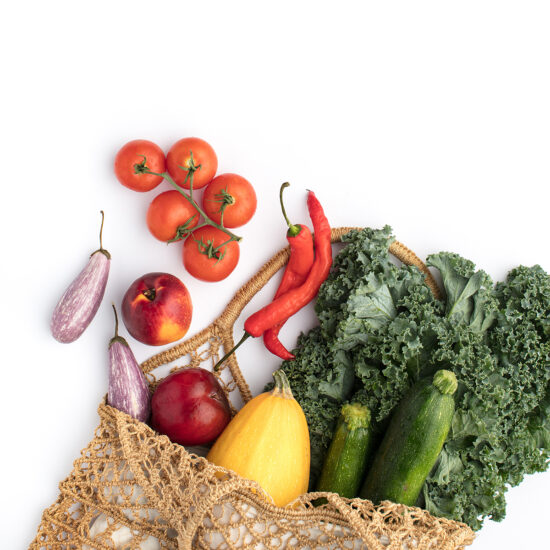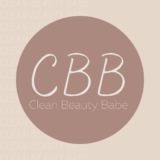How to Shop Clean

There are so many thoughts running through my head when I enter the grocery market. Where
do I start? Is this “healthy” enough? How much does this cost? I think I saw this product on
Instagram? Can I enter the snack aisle without buying every snack insight? The thoughts are
endless! And they are mainly stemmed from wanting to purchase clean, organic foods, but not
really knowing where to start.
One automatically assumes that shopping clean means a high checkout total. I’ve been there,
but it’s not necessarily true! First, it’s important to remember you are only one human, trying to
feed at least one, two, or maybe even more humans, so you are doing the best you can! I am
just here to help you navigate the clean and nontoxic world.

First, produce. When I first started out, I stuck only to the organic section, and have you seen
some of the prices for organic produce? Pricey! And buying organic is not accessible for
everyone for countless reasons. This is why I was ecstatic when I came across the Dirty
Dozen Clean Fifty concept. Essentially, the ‘Dirty Dozen are fruits and vegetables with the most
pesticides, according to EWG. While the ‘Clean Fifteen’ fruit and vegetables have the least
amount of pesticides. So, it’s a good basis to start shopping organic, while navigating what you
want your budget to stick to at the moment. Commit to buying organic for the items under the
‘Dirty Dozen, and feel okay with buying non-organic fruit and vegetables under the ‘Clean
Fifteen’ list. Another way to navigate the produce aisle is shopping for produce in season.
Buying produce in season can help you keep your cart clean, and this is due to location! If you
are buying food in season, there has been less transportation under the produce’s belt, which is
essentially better for you. All in all, if you can buy all organic, locally sourced produce, I highly
recommend doing so. However, do what works best for you and your family.

Next, the snack aisle. I know, I know, there is the concept of “only sticking to the outside aisles”
out there, and that may work for you and your plan. However, there are a lot of great, clean
options in those middle aisles that you are missing such as snacks, dried fruit, beans, nut
butter, milk, and more. The first thing to note is that grocery markets tend to keep the more
appealing, but not necessarily healthier items, at eye level; hoping it will be the first thing we
grab. Just keep that in mind! With all products within these middle aisles, I recommend
purchasing Certified Organic products first and foremost. If you are wanting to try gluten and
dairy-free options, turn the package over and look at the ingredients. Avoid any products that
include wheat and milk. When also looking at the ingredient list, try to avoid high fructose corn
syrup, hydrogenated oils, and artificial flavors and colors. The healthiest ingredients should be
listed in the top five of the overall ingredient list. For one extra step, also check out the amount
of sugar per serving. It’s important to know! Hormone and skin health are deeply impacted by
sugar. As far as the other information on the Nutritional Label, don’t look! Unless, of course, on
doctor’s orders.

The frozen section is tricky! Some frozen products contain ingredients to help keep their frozen
form that I would want to avoid. However, frozen fruits and vegetables have the same nutritional
value as they do fresh, which is great for smoothie making. According to Nutritious Life, she
mentions that often frozen produce has more nutritional value than fresh, or just about the
same, it really just depends. It is all about timing. As mentioned in her article, when the item is
picked, sold, and cooked all on the same day, fresh is the best option. However, if the item is
picked and frozen right away, the nutrients are locked into the produce. Now in regards to other
frozen meals, I rather cook them myself! Just remember to read the ingredient list, and at least
purchase Certified Organic.

Finally, the refrigerator section: milk, butter, and eggs! For milk, I highly recommend
purchasing almond, oat, coconut, or other plant-based milk available. Again, watch out for the
amount of sugar per serving. A lot of nuts or plant-based milk contains a good amount of sugar,
but there are many options with no added sugar. Brands such as Califia Farms Unsweetened
Almond Milk, Califia Farms Gluten-Free Oat Milk, and MALK Pure Almond Milk are personal
favorites, and they taste amazing. If you’re not dairy-free and drink cow’s milk, that is up to you.
However, check out this graphic from Ethique. It shows the environmental impacts of drinking
cow’s milk and just something to keep in mind. For eggs, I always recommend the brown, free-range, no added hormones, eggs. Vital Farms is great, but there are many other great brands
out there.

Your experience at the grocery market is your own. Something to really note is, this takes time
and weirdly enough, it takes practice! Also, make sure to keep a balance. If you want to get your
favorite snack or try something new that isn’t “clean”, you do what you want. This post is to act
as a guide, and offer advice on navigating the world of clean shopping.
XO



Follow Me On Social Media